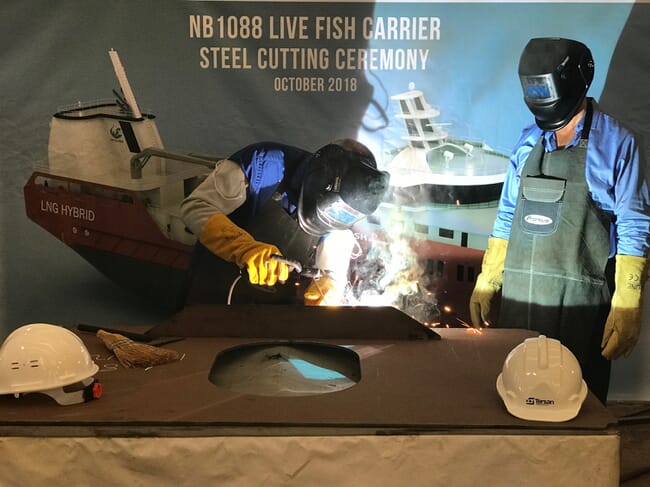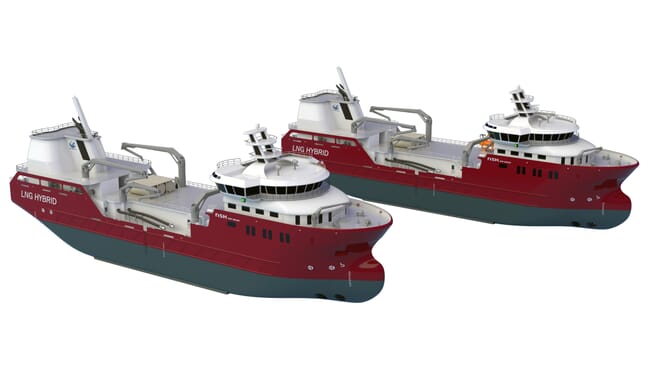The company’s first hybrid wellboat is already under construction. Both vessels are being designed by NSK Ship Design in Harstad and will be built by Tersan Shipyard in Turkey.

"Technology development means that we get to choose, from a range of solutions, the ones that can be efficient both for the environment and the business at the same time. Another example is the use of electricity at our fish farms, where we already have turned off the diesel generators at 29 of our 39 farms, and in 2019 an additional six new fish farms will be connected to the grid. With the transition to liquefied natural gas and shore power also for the live fish carriers, the conversion to more environmentally friendly energy sources is becoming substantial," says Erik Welde, CEO of Nordlaks.
The potential environmental impact from current methods used to fight sea lice provides an additional reason why Nordlaks decided to purchase two new wellboats.
"We foresee a future where removal of sea lice from the fish will happen in closed containment systems aboard boats, and it is highly important for us to have access to the required capacity and to keep control of the process ourselves,” adds Welde.

In cooperation with NSK Ship Design, the Norwegian NOx Fund and governmental funding agency Enova, Nordlaks have chosen to invest in liquefied natural gas (LNG) as an energy source for the live fish carriers, also accompanied by a large battery pack and an onshore electrical power connection.
The use of battery packs, shore power and LED lights will save the environment 1,864 tonnes of CO2 on each of the vessels per year. The governmental funding agency Enova is supporting the project by providing more than 3.1 million kroner.
"Enova is working for new energy and climate technologies to be developed and put in place so Norway can become a low-emission society. This relies on players like Nordlaks who are willing to lead the way. Battery solutions at sea are one of the necessary changes we must see in the transport sector, whilst the aquaculture industry also has a great potential for cutting diesel consumption. The lessons learned by Nordlaks will make it easier for others in the industry to follow,” says Øyvind Leistad, Enova’s marketing and development director.
In addition, the use of gas engines will give a 30 percent reduction in CO2 emissions compared to a traditional diesel engine, because a gas engine utilizes the energy in the fuel more efficiently. The use of liquefied natural gas will also provide a 90 percent reduction of the emissions of NOx.
“The industry's own funding agency, the Norwegian NOx fund, supports wellboat number two with up to 56 million kroner. The substantial support is based on the large NOx reduction that the vessel achieves by converting from diesel to LNG. The emission cut is estimated at 136,000 kg NOx. It is equivalent to NOx emissions from approximately 85,000 new diesel cars with €6 emission standards. With the new live fish carriers, Nordlaks becomes a pioneer in their ship segment. We have encouraged the use of gas engines for live fish carriers and hope for more companies to learn from this experience and to follow up,” says Tommy Johnsen, managing director of the NOx Fund.


